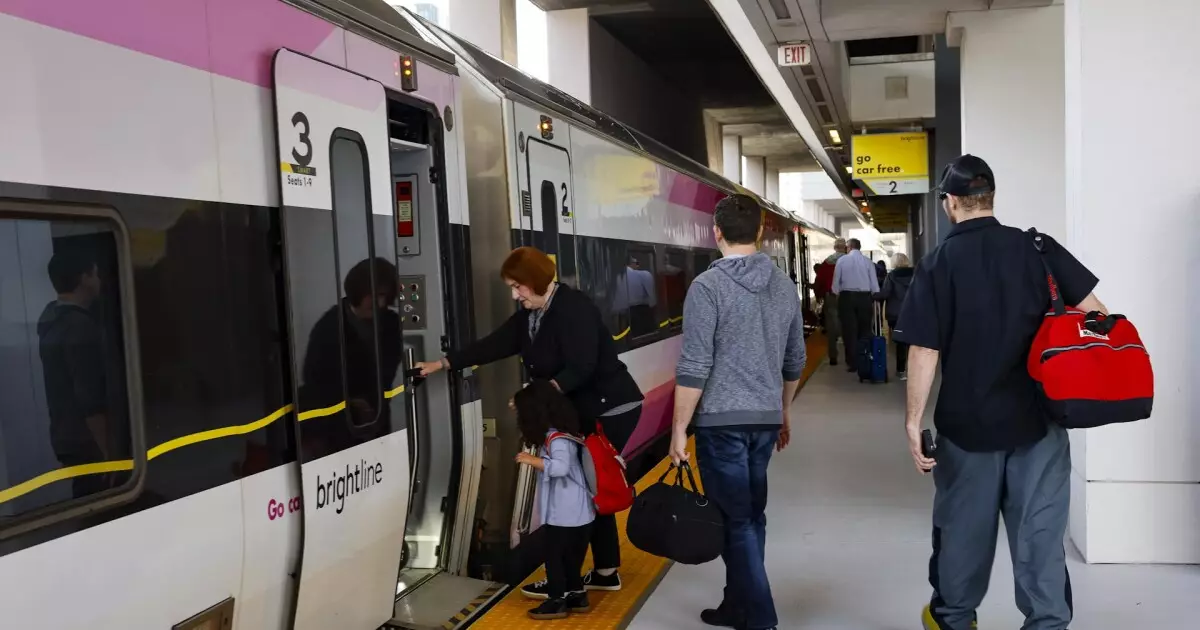The Brightline passenger train service in Florida stands as a testament to modern infrastructure development, particularly in intercity transit. Its recent financing achievement illustrates not only the challenges inherent in public-private partnerships but also the broadening spectrum of investment opportunities that innovative financing strategies can unlock. This article explores the intricacies of Brightline’s financing journey, emphasizing its significance in the larger context of American transport infrastructure.
Brightline’s path to securing $3.2 billion in financing was paved with diligence and long-term planning. This financing effort traces back to 2017 when Brightline made its inaugural foray into the municipal bond market. Zachary Solomon of Morgan Stanley aptly notes that seven years of persistent storytelling about Brightline’s vision culminated in a successfully executed deal. This prolonged effort not only enhanced investor relations but also facilitated a deeper understanding of the project’s potential impact, underscoring the trepidations and aspirations of stakeholders involved.
The most striking element of this financing is its classification as the largest private-activity bond issuance in U.S. history, breaking ground as the first investment-grade bond deal for American intercity rail. By restructuring a staggering $4.5 billion of existing debt through a carefully coordinated mix of taxable and tax-exempt instruments, Brightline has deftly navigated the complexities of modern finance. The collaboration amongst various entities—from financial advisors to legal counsel and the Florida Development Finance Corporation—exemplifies a concerted effort to elevate the entire financing landscape while positioning Brightline as a front-runner in the realm of innovative infrastructure ventures.
The sheer complexity of the financing transaction is noteworthy. Alexandra Levin’s analogy of this undertaking as the “Thanksgiving dinner of transactions” aptly conveys the intricate coordination required to align disparate pieces of the financing puzzle. Each component—whether senior liens or subordinate structures—needed to be prepared with nuanced care, reflecting the unique requirements of the capital markets. The metaphor effectively encapsulates the multifaceted nature of the financing, wherein different elements required varying levels of attention and diligence.
Moreover, the commitment of the team was palpable as they devoted long hours leading up to the deal, demonstrating a level of dedication that is essential for executing a project of this magnitude. This determination not only reflects on their professionalism but also highlights the significant workload involved in harmonizing investor expectations amidst a competitive market environment.
Transparency played a crucial role in building trust with the investor community. Through regular updates and proactive communication, Brightline positioned itself as a credible and responsive entity in the fast-paced world of public finance. Levin’s commitment to investor relations goes beyond routine practices; it illustrates a strategic approach to fostering long-term partnerships that can withstand market fluctuations and uncertainties.
The result of this engagement was manifest in the substantial demand generated when the financing finally reached the market. Each tranche of bonds garnered interest from a broad array of investors, which is indicative of Brightline’s deepening market appeal. The enthusiastic response—encompassing high-grade bond funds to high-yield taxable notes—illustrates a successful rebranding of Brightline that has captured the imagination of institutional and retail investors alike.
The successful execution of the Brightline financing provides a representational blueprint for future infrastructural endeavors across the United States. Solomon’s assertion that the deal serves as a model for financing complex projects underscores an essential lesson in coordination, diligence, and investor engagement. With America’s infrastructure landscape needing urgent updates to meet contemporary demands, Brightline’s experience presents a viable template for financing that marries public goals with private investment.
As the United States aims to modernize its infrastructure, Brightline’s innovative financing strategy underscores how private-public collaboration can create significant avenues for growth and development. The project’s forward momentum may inspire confidence in future investments, potentially fostering enthusiasm for similar initiatives in regions eyeing improvements to their own public transit systems.
The financing of Brightline represents more than merely an economic transaction; it embodies the future trajectory of transport infrastructure in America. Through tenacity, creativity, and key partnerships, Brightline has paved the way for a new era in intercity rail travel—one that could inspire a nationwide revival of infrastructural investment and progress.

